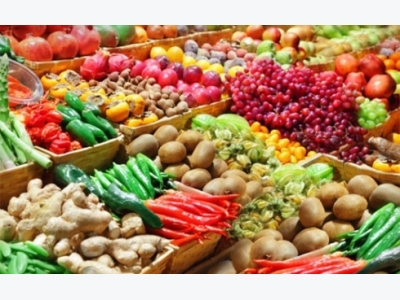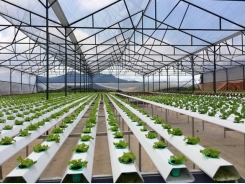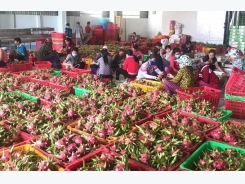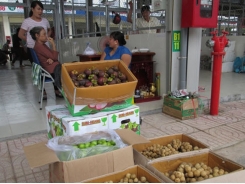Fruit and vegetable exports grow amid concern about product quality

Between January and September, Vietnam’s fruit and vegetable exports witnessed the highest growth in the group of agro-forestry-fisheries products, increasing a staggering 45.6% to US$2.67billion when compared to the same period last year.
China was the biggest export destination, with 70% of the country’s fruit and vegetables heading over the border to the Chinese market. This notable increase in export growth of fruit and vegetables is attributed to Vietnam’s integration into ASEAN and ASEAN integration into the other member countries.
Notably, fruit and vegetable exports has seen the equal growth to coffee and surpassed other key products such as rice, rubber, tea and cashew nuts. Vietnam’s fruit and vegetables have successfully penetrated several demanding markets such as the US, Japan, the Republic of Korea, New Zealand and Australia.
The US has recently allowed the import of white and red-flesh dragon fruit, rambutan, lychee, and longan from Vietnam while Japan followed suit and have also opened its market to Vietnamese white and red-flesh dragon fruit and mango.
Vietnam has also found new markets for white and red-flesh dragon fruit along with mango with the Republic of Korea also agreeing to import them, while New Zealand has given the green light to the importing of mango, dragon fruit and lychee from Vietnam. Australia has recently granted an import license to the country’s lychees and mango.
With these major breakthroughs achieved, Vietnam is targeting the EU as a potential market to export fruit and vegetables to.
According to an economic report by the Vietnamese Institute for Economic and Policy Research (VERP) China is the largest import market for Vietnam’s farm produce. This is also the export market that has recorded the highest growth, especially with agro-forestry and fisheries products.
A case in point is the sharp increase in the quantities of fruit and vegetable exports to the Chinese market, which have grown 60% in the first three quarters of the year.
This is part of an overall upward trend. Last year, export turnover of these products to Chinese market hitUS$1.739 billion, accounting for 70.7% of total fruit and vegetable exports
In the eight-month period export turnover to China reached more than US$1.787 billion, making up 71.7% and higher than the proportion of one year earlier. The total export turnover to the Chinese market this year is likely to hit US$2.6 billion.
Warning of excess crisis
According to experts from VERP, Vietnam has heavily depended on the Chinese market. While this makes sense, China is a big market and is geographically very close to Vietnam, thereby facilitating Vietnamese exports, particularly agricultural products.
VERP experts said the Chinese market is growing steadily, imposing rigid requirements and technical barriers on Vietnam’s agricultural products that require an improvement in product quality. In addition, the continued increase in China’s RMB has also facilitated Vietnamese exports to the vast market.
The acceptance of Vietnamese produce by several demanding markets shows that product quality has improved recently and trade promotion activities have been implemented effectively. These moves have shown that it can be done and have given fresh impetus to exporters desiring boost exports to demanding markets.
However, the process is lengthy. Negotiations are protracted, for example it took 9 years of talks for dragon fruit to enter the Australian market and 10 years for star apple to gain entry to the US market.
However, experts have underlined the importance of improving quality and trade promotion activities to secure market shares of fruit and vegetables in foreign markets, and updating information in a timely fashion on the demands and standards of import products for each market.
Economists noted that Vietnam sees huge opportunities to further improve trade surplus with China in the near future. This is contingent on the country raising awareness about the importance of this market with a focus on further improving the quality of products to ensure they meet requirements set by Chinese importers.
However, VERP experts have advised caution, warning of an unavoidable excess crisis as a result of poor quality. This has previously be fallen such products as pork, watermelon or lychee in recent times and could happen again.
Có thể bạn quan tâm
Phần mềm

Phối trộn thức ăn chăn nuôi

Pha dung dịch thủy canh

Định mức cho tôm ăn

Phối trộn phân bón NPK

Xác định tỷ lệ tôm sống

Chuyển đổi đơn vị phân bón

Xác định công suất sục khí

Chuyển đổi đơn vị tôm

Tính diện tích nhà kính

Tính thể tích ao hồ




 Vietnam to exceed the rice export target for…
Vietnam to exceed the rice export target for…  Vietnam re-exports Thai fruit to China
Vietnam re-exports Thai fruit to China